A roof without gutters is exposed to damage, such as deterioration, fungus, moss, minor cracks, flaking of paint, and rising capillaries. All of these accelerate the decline of the roof and weaken the overall building. This is why it’s so important to keep all aspects of your roofing in excellent condition.
Guttering is the backbone of any great roofing structure, and it plays a major role in protecting the facades and exterior of your property. Today, we’re going to shine a light on one of the best guttering options on the Australian market: the Feature Gutter.
This article will explore the key benefits of feature guttering, as well as the different types of profiles, determining which is suitable for your roof and how you can benefit from replacing your old gutters!
Definition of Feature Guttering
As a flexible guttering profile, feature gutters use a complete, sealed fixing for longer life and outstanding durability and are compatible with steel and tile roofs. Its key features include:
- A Profile Face height of 118mm.
- 28 colour variations
- 100% Australian-made BlueScope Steel
- Sold per L/M and can be custom-cut to your requirements.
- Available in both Colorbond and Zincalume steel.
- Able to be installed on Timber or Metal Fascia.
- Compatible with a complete range of gutter accessories.
What Makes Up a Gutter?
Planning construction or renovation works? Let’s take a look at the main components of a gutter.
The horizontal part. Regardless of its aesthetics or dimensions, this part collects the rainwater that runs off the roof.
The downpipe. Rainwater can be drained from the horizontal part of the drainage system as a vertical part of the available diameter.
The niches. These accessories serve as connections between the gutter and the downspout.
The collector. This connects the downspout to the drainage system.
Want to learn more about guttering systems, such as gutter material? Check out why you should choose Colorbond guttering. It’s more than just paint on steel.
Why Colorbond Steel?
Made from Bluescope steel and inspired by Australian landscapes, Colorbond Metal is an Australian-made building material that handles all weather conditions.
Durable, high-performing, compliant, sustainable, and available in a range of colours, Colorbond can be applied to fencing, sheds, insulated panels, patios, and more.
The first layer comprises a zinc/zincalume alloy coating for corrosion protection.
The second layer is an adhesive primer to help the finish adhere to the steel.
The third layer is an oven-baked paint finish, providing UV protection so the colour stays vibrant.
The fourth layer is a heat-reflective coating, pushing back the sun’s rays away from your home.
Finally, a clear acrylic glaze provides extra protection against damage, making your roof watertight.
Going through this heat application process makes Colorbond resistant to chipping, cracking, and peeling better than traditional spray-on paint finishes.
The roofing is coated with unique ceramic and titanium oxide particles, reducing greenhouse gas emissions as it reduces the electricity needed to cool your home.
Colorbond finishes
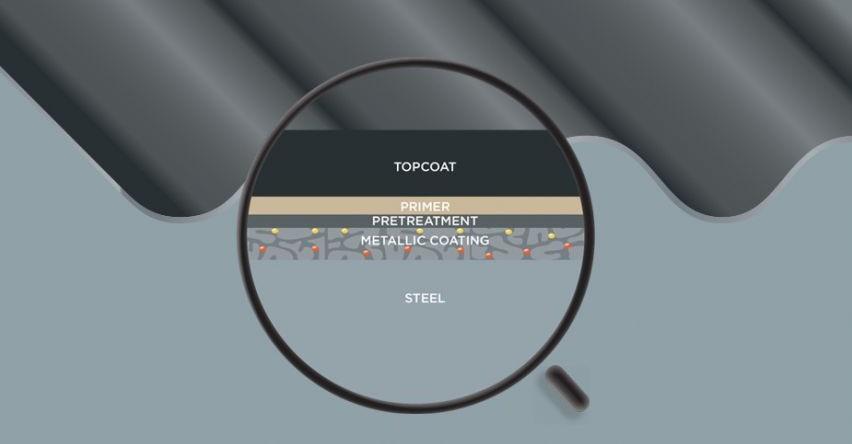
Colorbond is available in several finishes, including a Classic finish with a low sheen aesthetic such as Dove White and Evening Haze, a Matte finish or Classic finish such as Monument or Shale Grey designed to diffuse reflected light, and a Metallic finish for a long-lasting lustre.
Colorbond steel also conforms to Australian Standards AS1397:2021 and AS/NZ 2728:2013, backed by Bluescope warranties for your peace of mind. If you would like to learn more about the advantages of steel roofing, look at a comprehensive guide to Laserlite 2000!
Looking for square gutters, gutter guards, or metal guttering? The Roofing Options team provide roofing supplies to Berwick, Narre Warren, Langwarrin, and surrounding areas of Melbourne.
Types of Gutter Profiles
Unsure of what will suit your home? Let’s look at the different types of gutter profiles available and how they can prevent water pooling.
Box gutters
Want to restore historic buildings? This type of gutter is rectangular and is installed by being boxed between two parallel parts of the roof’s edge. Box gutters are a great alternative if you want gutters that can’t be seen from the ground.
Commonly used in commercial buildings such as shopping malls, factories, warehouses, office buildings, and schools, these can handle large volumes of water flow. Box gutters also need to be cleaned once a month.
O-Gee gutters
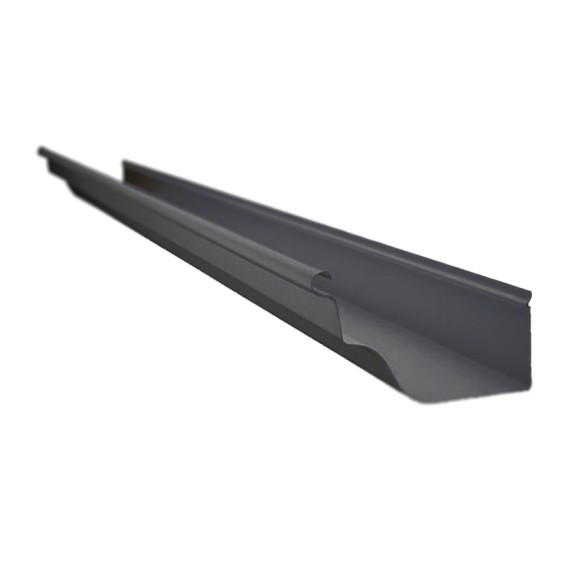
Shaped like two curves forming an elongated S, this structure is visible on the front side of the gutter. An original gutter profile is perfect for homes with character, as the curvature of the system creates a unique look.
Effective for rainwater drainage, it has a water-carrying capacity that makes the maintenance of your roof easier.
Half-round gutters
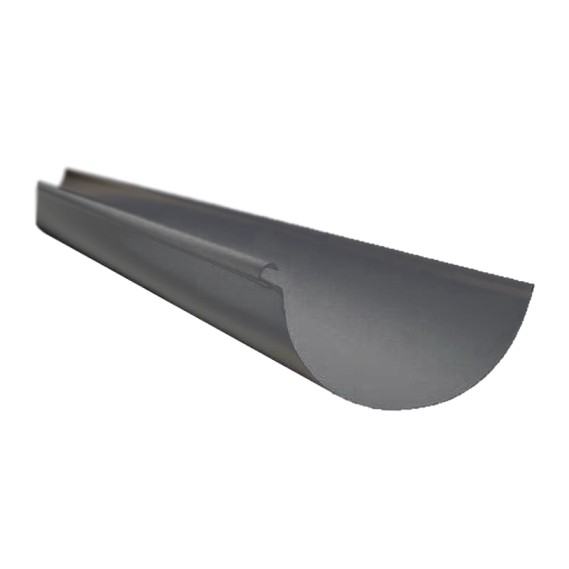
Commonly featuring a U-shaped profile and a half-round appearance, these gutters stick out from the fascia. For older houses, half-round gutters can preserve their appearance with a smooth surface that doesn’t have many creases for water or debris to collect in.
Durable and corrosion-resistant, half-round gutters are easier to clean and require less maintenance. If you’d like to learn more, have a read on how to maintain polycarbonate roofing panels.
Concealed gutters
Built behind the fascia rather than over or above it, concealed gutters-also called internal fixed guttering-are hidden from view by the fascia.
Used on commercial premises, concealed gutters can make attachments stand out unobstructed, which is ideal for commercial properties when mounting store signs, advertisements, billboards, or lighting and security cameras on the fascia board of the structure. Due to their design, water can gather and pool in concealed gutters, so it’s important to take proper care. Always ask a roofing professional when in doubt.
Quad gutters
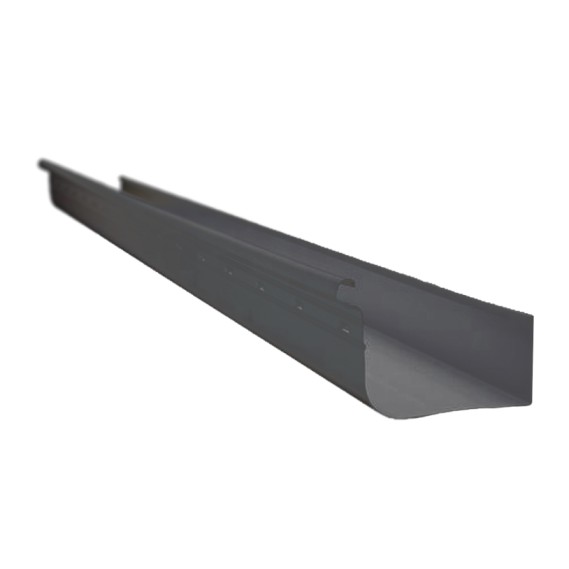
With a traditional, clean, straight-edged appearance, quad gutters-also known as D gutters- complement a range of home designs as a practical and versatile choice. Easily mounted using hidden internal or external brackets, you can create a sleek, streamlined appearance.
As a useful addition to existing gutters or home gutters, these can be made from stainless steel, aluminium, galvanised steel, or Colorbond.
Squareline/Fascia/Feature gutters
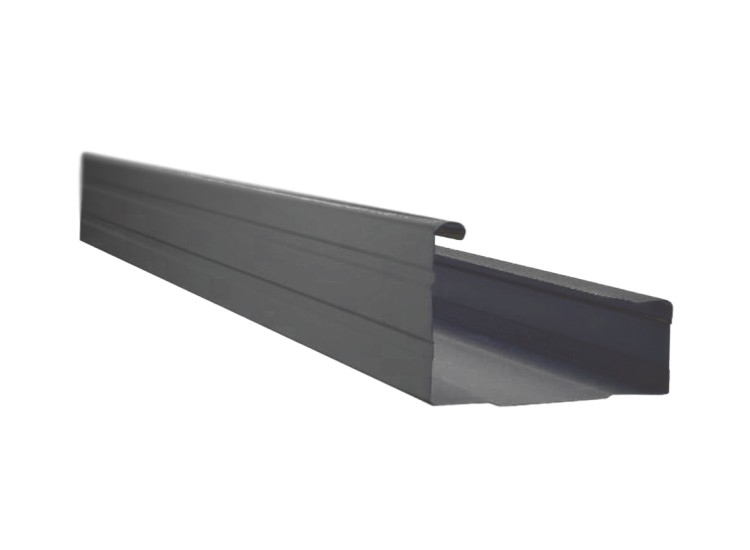
As another popular choice for Aussie homes, square line profiles have a clean, strong line design, with the front being high and the top edge sloping. The ends of the tiles on the roof are also covered, with modest dimensions, and are excellent for more private residences.
Internal and external supports include overflow slots, which prevent water from spilling out the back of the gutter. Moreover, this gutter profile can be paired with tiled roofing, such as Zincalume by BlueScope, Galvsteel, Colorsteel Endura, and Colorsteel Maxx.
Needing new guttering? With a wide range of options, Roofing Options supplies roofing supplies to Thornbury, Reservoir, Lalor, Broadmeadows, and surrounding areas across Melbourne.
How To Choose the Right Profile For Your Building?
If you’re concerned about potential water damage, the size and capacity of types of gutters play a part.
1. Consider your roof surface area
What is the surface area of your roof? As residential and commercial roofing come in many shapes and sizes, this will determine the capacity your gutters need to handle.
For example, you can obtain the total square footage from a rectangular or square roof. For more complex shapes, seek a roofing professional for accurate measurements.
2. Consider rainfall intensity
If you live in an area prone to frequent, heavy rainfall, you may require a larger guttering system to handle the increased volume of water. An oversized system can prevent water damage.
3. Roof pitch
The angle at your roof slopes can impact how quickly rain falls from your roof’s surface. Steeper pitches shed water faster than a flat roof, so you may need larger gutters to handle the runoff.
Flatter roofs may require a smaller guttering system since water lingers on the surface. Overall, taking into account the pitch ensures efficient water drainage.
4. Consider debris and leaf accumulation
Twigs, leaves, and debris can accumulate over time, causing clogging and water overflow problems. If trees surround your property, this can make an impact.
Larger gutter systems with a higher capacity can handle debris build-up without causing blockages and water damage. Consider installing a gutter guard to cut back the risk of clogging.
Reliable Roofing Supplies in Melbourne
Whether you need fresh gutters to handle heavy rainfall or water overflow or want to stay protected from water damage, The Roofing Options team have a wide variety of seamless gutters for your home or commercial property. From feature gutters to Laserlite 2000 and 3000, Suntuf EZ Glaze, Sunglaze, Sunlite Twinwall or steel roof sheets, we’ve got high-quality supplies for any environment.
Contact us today or visit our Cranbourne, Coburg, or Campbellfield stores for a custom quote on your ideal gutter material!
